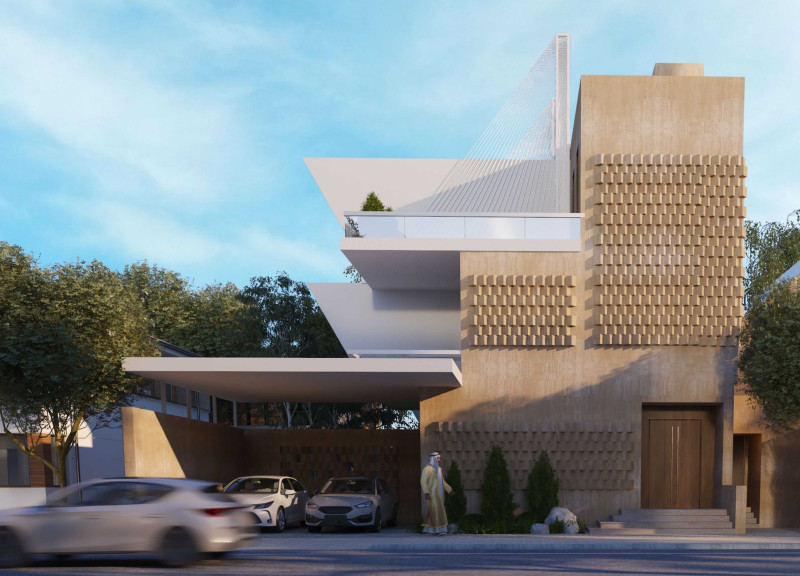5 key facts about this project
## Analytical Report: House of the Future
### Overview
Located in the United Arab Emirates, the House of the Future integrates traditional architectural styles with modern design principles, responding thoughtfully to the region's climate and cultural context. This project emphasizes a dual focus on preserving cultural heritage while incorporating innovative, sustainable practices that aim to enhance modern living.
### Spatial Configuration and User Experience
The architectural layout is designed to facilitate both social interaction and privacy. Ample outdoor gardens and terraces create inviting spaces for social gatherings, promoting a lifestyle connected to nature. Within the interior, a well-organized functional layout features open living areas and private quarters, allowing for family engagement while maintaining personal retreats. The ground floor serves as a communal hub, while private spaces are positioned on upper levels, achieving a balance between shared and individual experiences.
### Material Selection and Sustainability
Materiality plays a crucial role in fulfilling aesthetic and functional objectives. The project utilizes a combination of traditional and innovative materials, including concrete for its strength and thermal efficiency, wood for its warmth and acoustic properties, and glass to enhance natural light. Sustainability is prioritized through strategic design elements, such as prefabricated components, shading devices, and natural ventilation systems, which collectively minimize energy consumption and improve thermal comfort in response to the UAE's climate.






















































